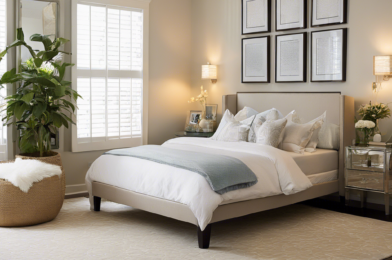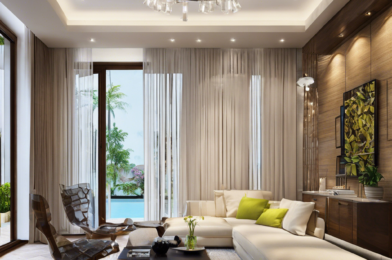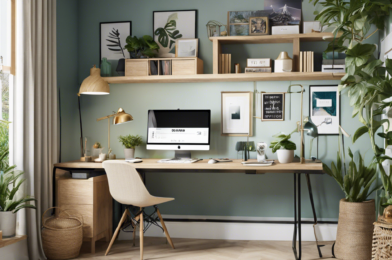Transforming your living room doesn’t have to be a costly or time-consuming endeavor. With a little creativity and some elbow grease, you can easily update and personalize your space over a weekend. So, whether you’re looking for a quick refresh or a complete makeover, here are ten DIY projects to give your living room a whole new look!
Adding a fresh coat of paint to your walls can instantly transform your living room. Opt for a new color or stick with a fresh coat of your current shade to brighten up the space. Painting is relatively inexpensive and can be a fun project to do yourself. If you’re feeling adventurous, consider creating an accent wall with a bold color or a wallpaper design. This will quickly liven up the room and can be a great way to introduce your personality into the space.
Another simple way to update your living room is to change up your lighting. Try swapping out your old lampshades for something more modern or eclectic. Perhaps introduce a statement floor lamp or a unique pendant light to create a focal point. Playing with lighting can dramatically alter the ambiance and feel of your room, so it’s a great way to achieve a ‘new room’ vibe without moving any furniture.
If you’re handy with a hammer and nails, consider creating a feature wall with shelving. Not only will this add interest and texture to your living room, but it also provides functional storage and display space. Opt for floating shelves to display artwork, photographs, and decorative items. This is a great way to showcase your personality and interests while also keeping your space organized and clutter-free.
The living room is a perfect place to get creative with tile. Try your hand at creating a unique backsplash behind your TV or a colorful feature wall. Tiles are a great way to introduce pattern and texture, and with so many options available, you’re sure to find something that suits your style. This project is a little more complex but is sure to make a statement and impress your guests.
A living room is often a gathering place, so why not make it cozy? Sewing your throw pillows and blankets is an easy weekend project, and it ensures your space is one-of-a-kind. Choose fabrics that complement your color scheme and add texture with different weaves and patterns. This is a great way to showcase your crafty side and make your living room extra inviting.
Flooring can also be a DIY project! If you have an old wooden floor that needs some love, why not sand it back and refinish it? This is a cost-effective way to update your floor and can be a fun project to do yourself. Alternatively, if you’re looking for a quick fix, try peel-and-stick vinyl flooring. This is a great temporary solution that can instantly refresh your space.
Windows are a key feature of any living room, so why not give them some attention? Sewing your curtains is a simple project that can add a pop of color and pattern to your space. Alternatively, if you’re handy with a drill, try installing some stylish new blinds. This is a great way to control the light and privacy in your living room while also adding a design element.
If you’re feeling artistic, why not try your hand at a mural? This could be a fun weekend project that adds a unique and personal touch to your living room. Paint a design that reflects your style and interests. Whether it’s a bold geometric pattern or a beautiful nature scene, a mural is sure to make a statement and become a conversation piece when guests visit.
For a quick and easy update, try rearranging your furniture. This is a no-cost way to give your living room a new look and can be a fun way to spend an afternoon. Play around with different layouts and consider how the space functions. You might be surprised at how much a simple shift in furniture placement can transform the entire feel of the room.
Lastly, bring the outdoors in with some greenery! Create your terrariums or opt for hanging plants and unique pots to display your botanical collection. Plants are a great way to add life and color to your living room, and they have the added benefit of improving air quality. So why not get gardening and create an indoor oasis?
There you have it – ten DIY projects to keep you busy over the weekend and a transformed living room to show for it! Happy crafting and good luck!




